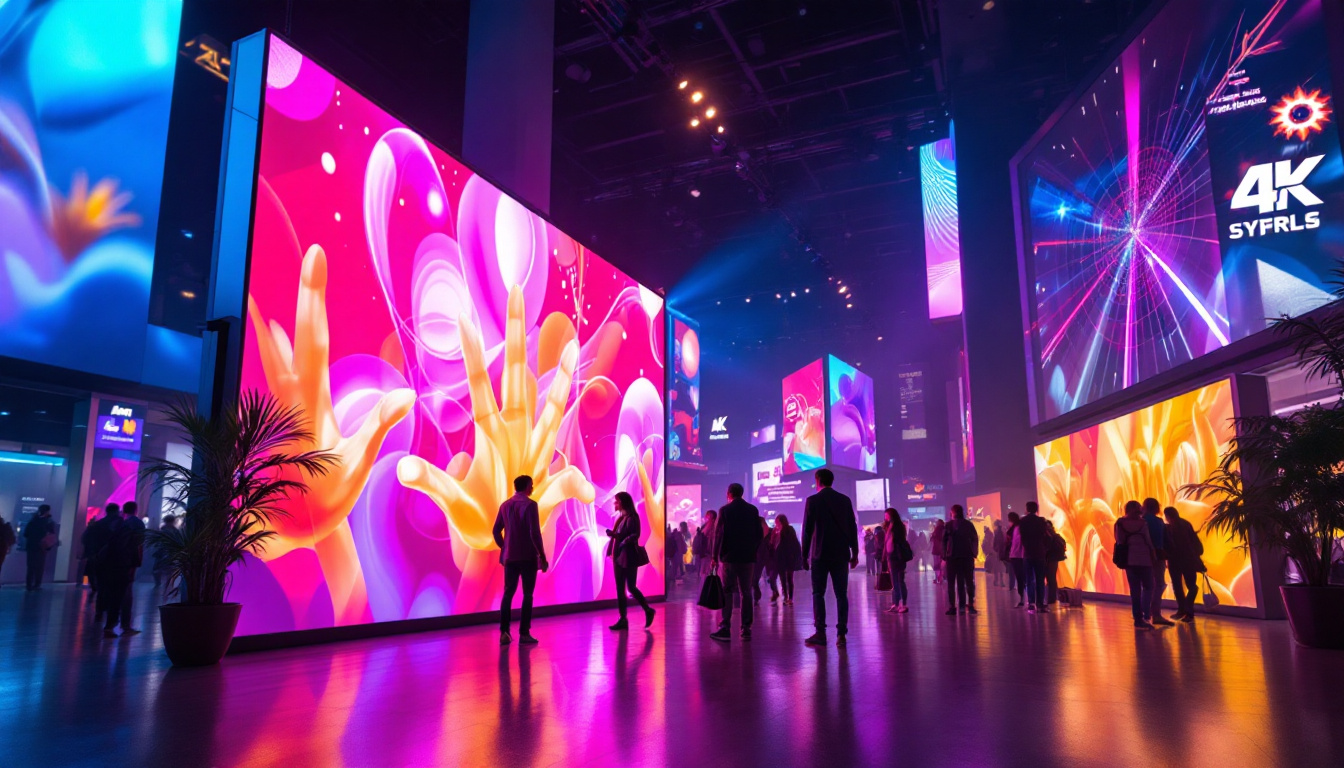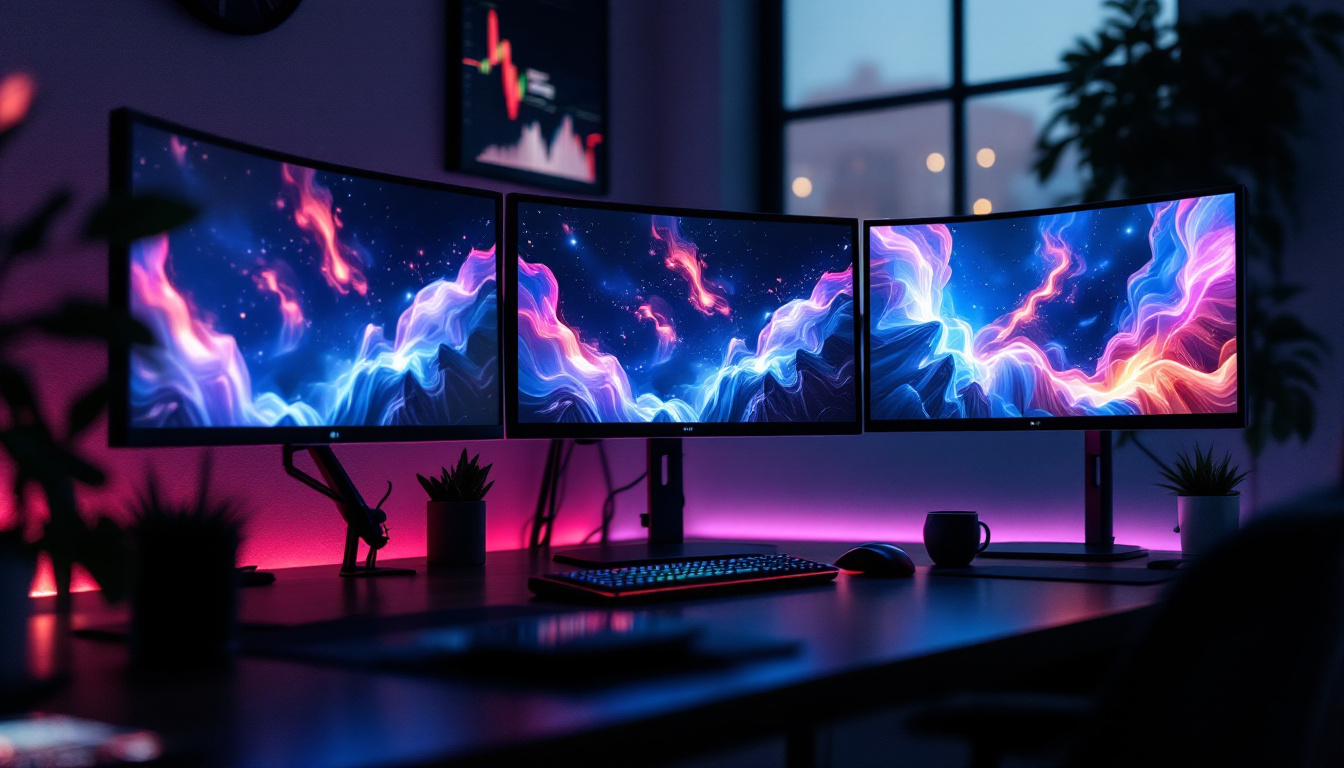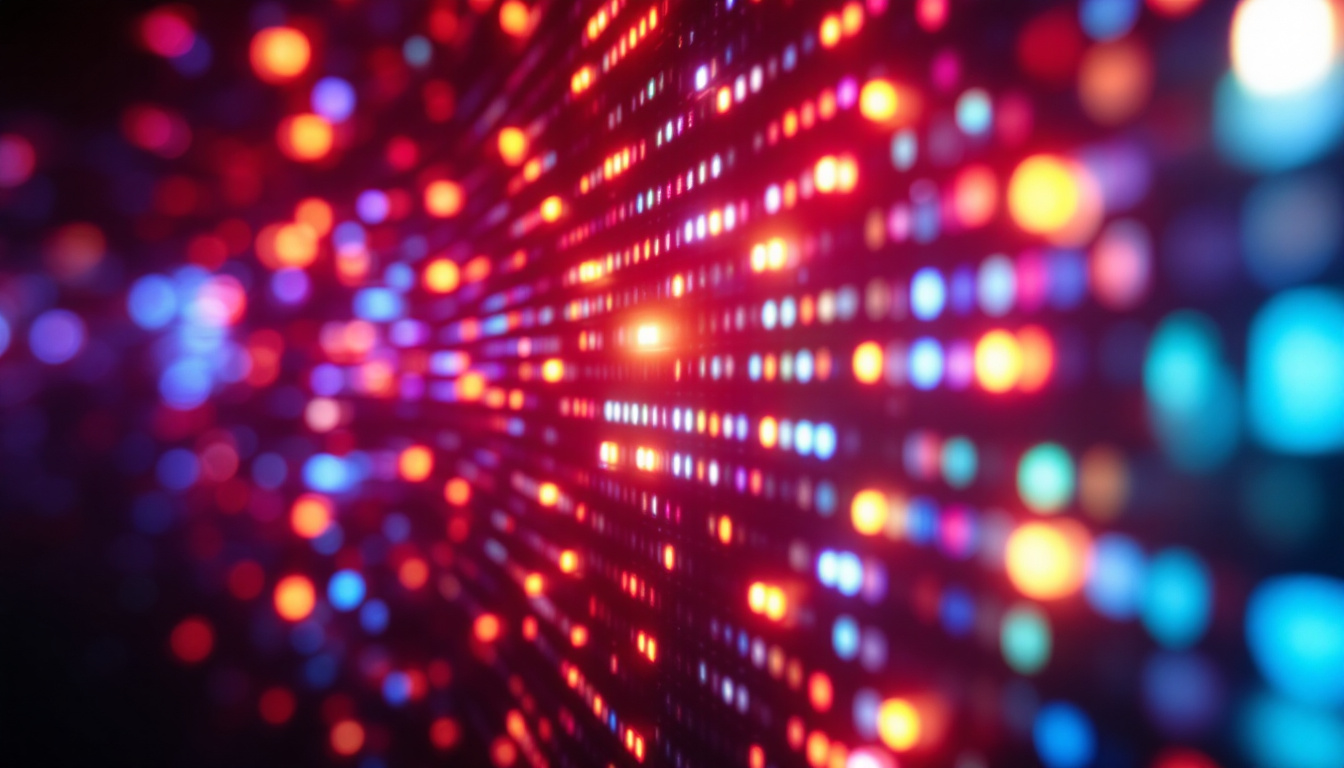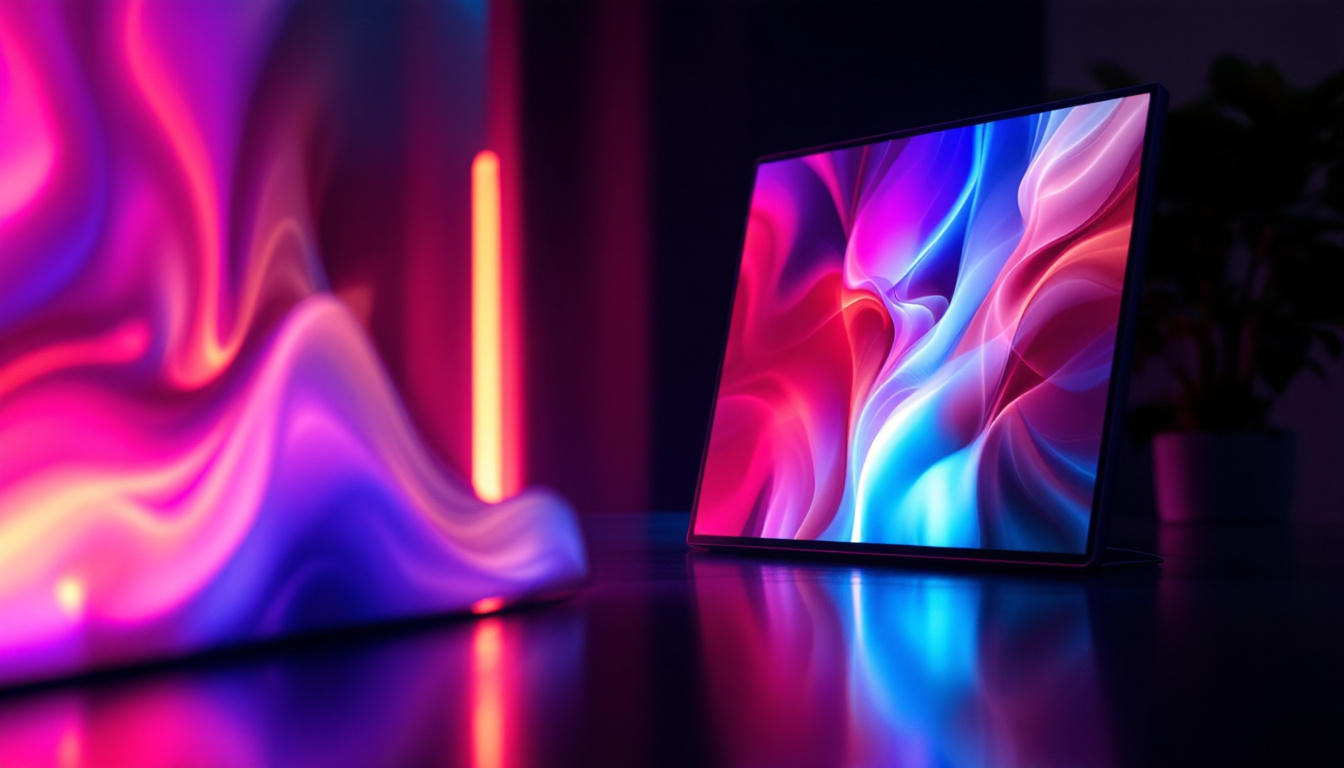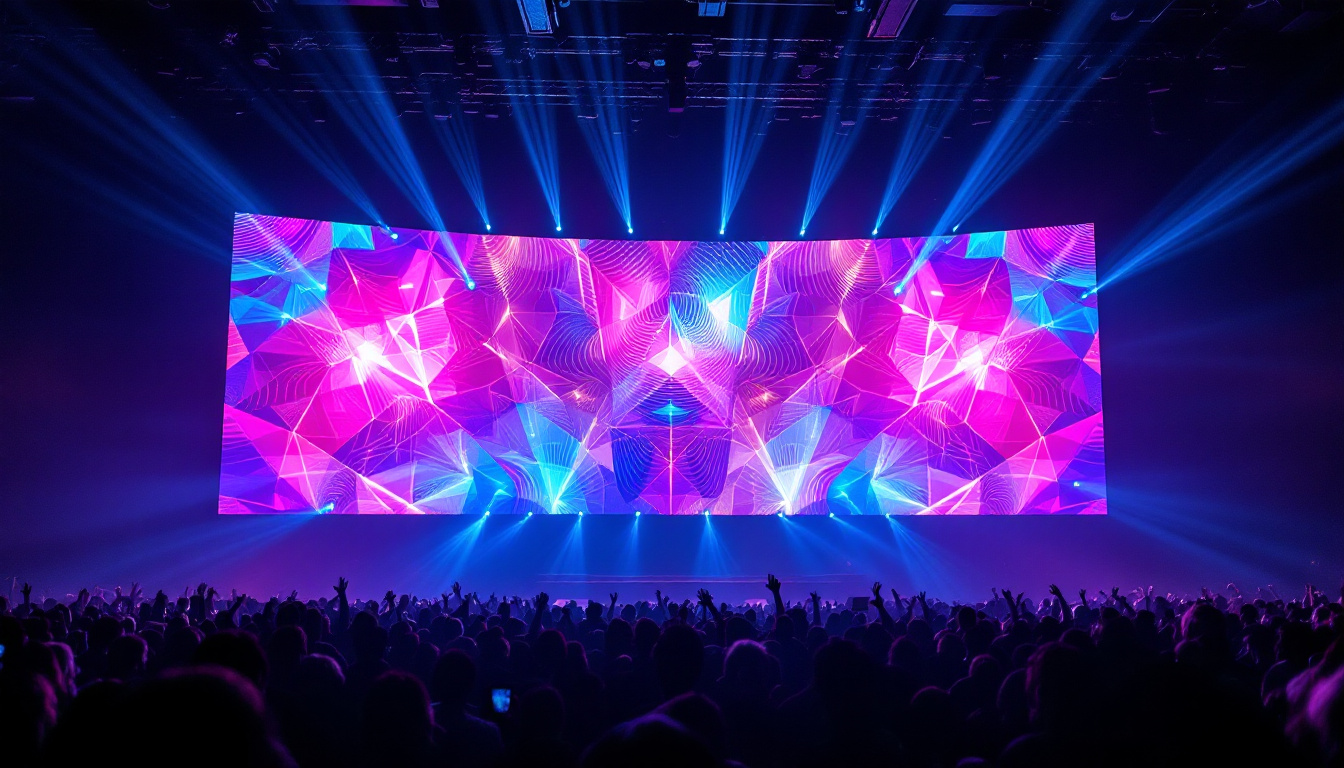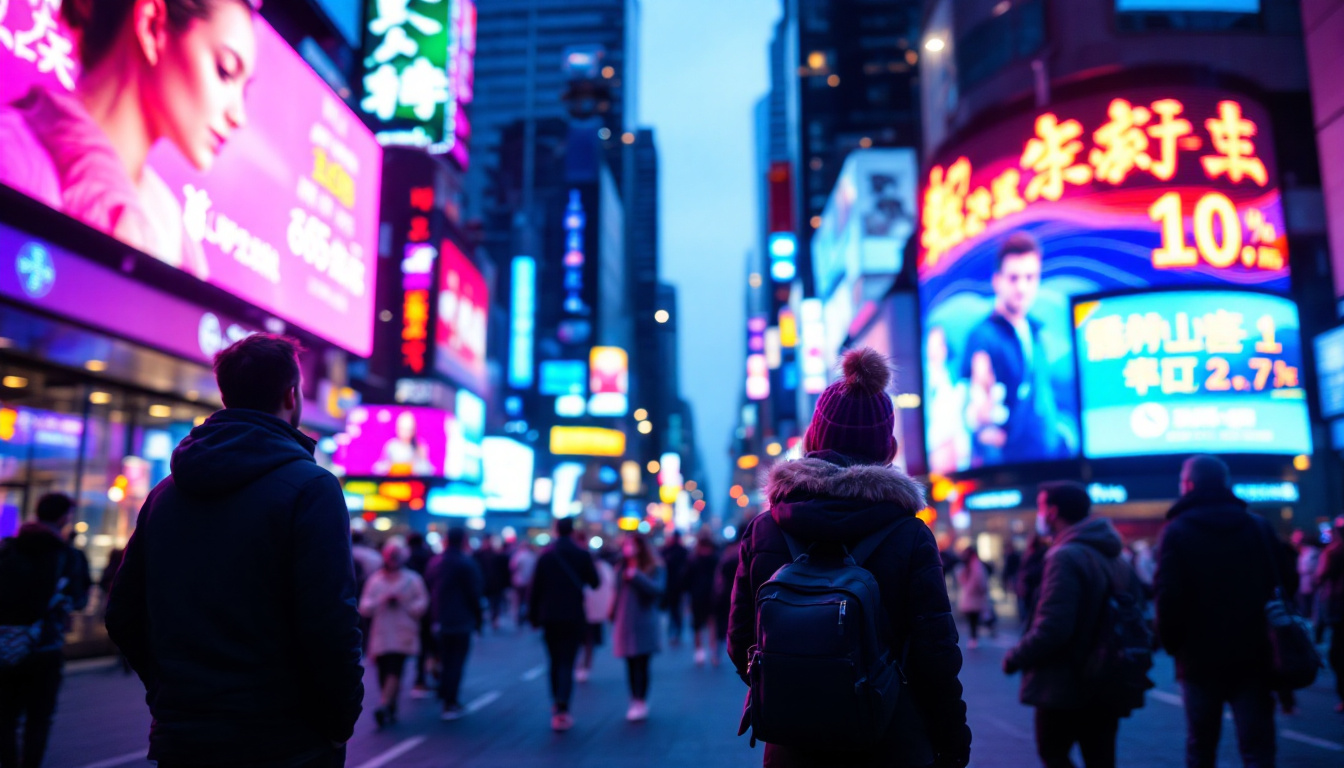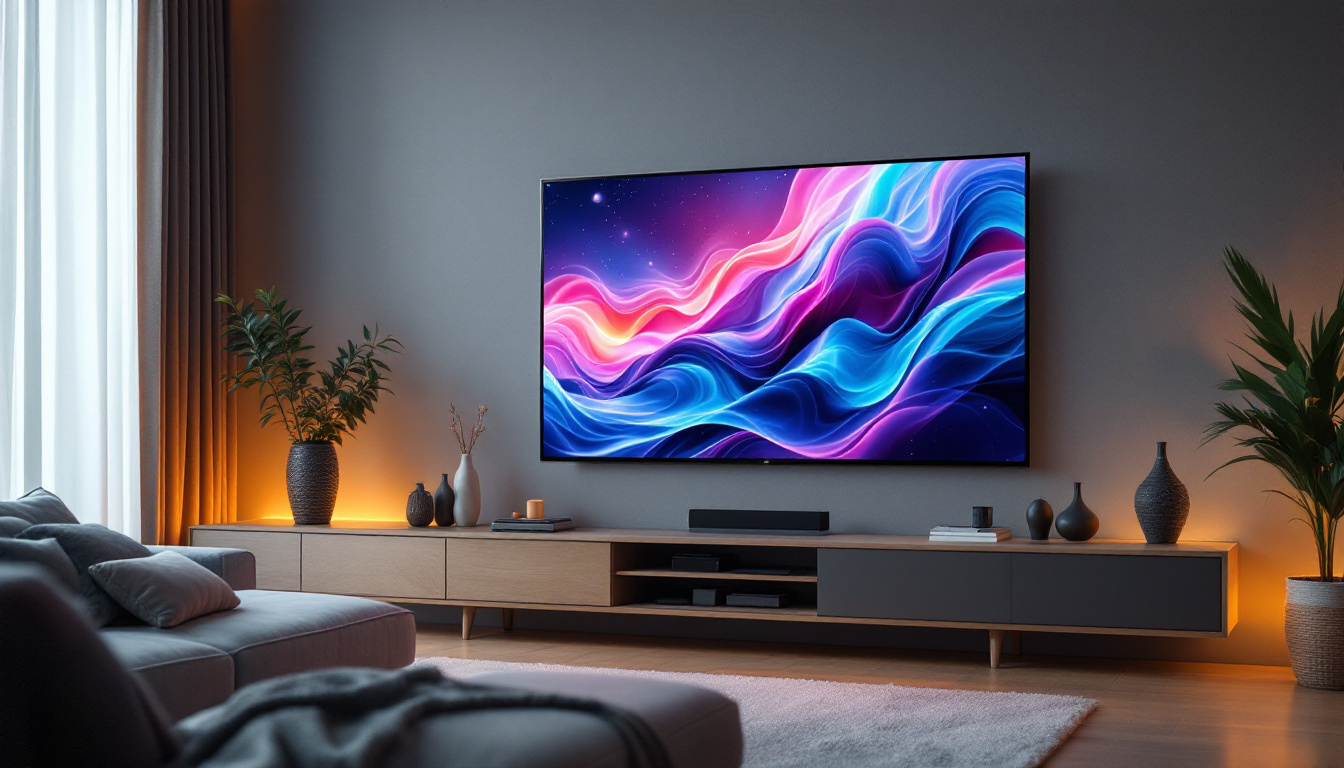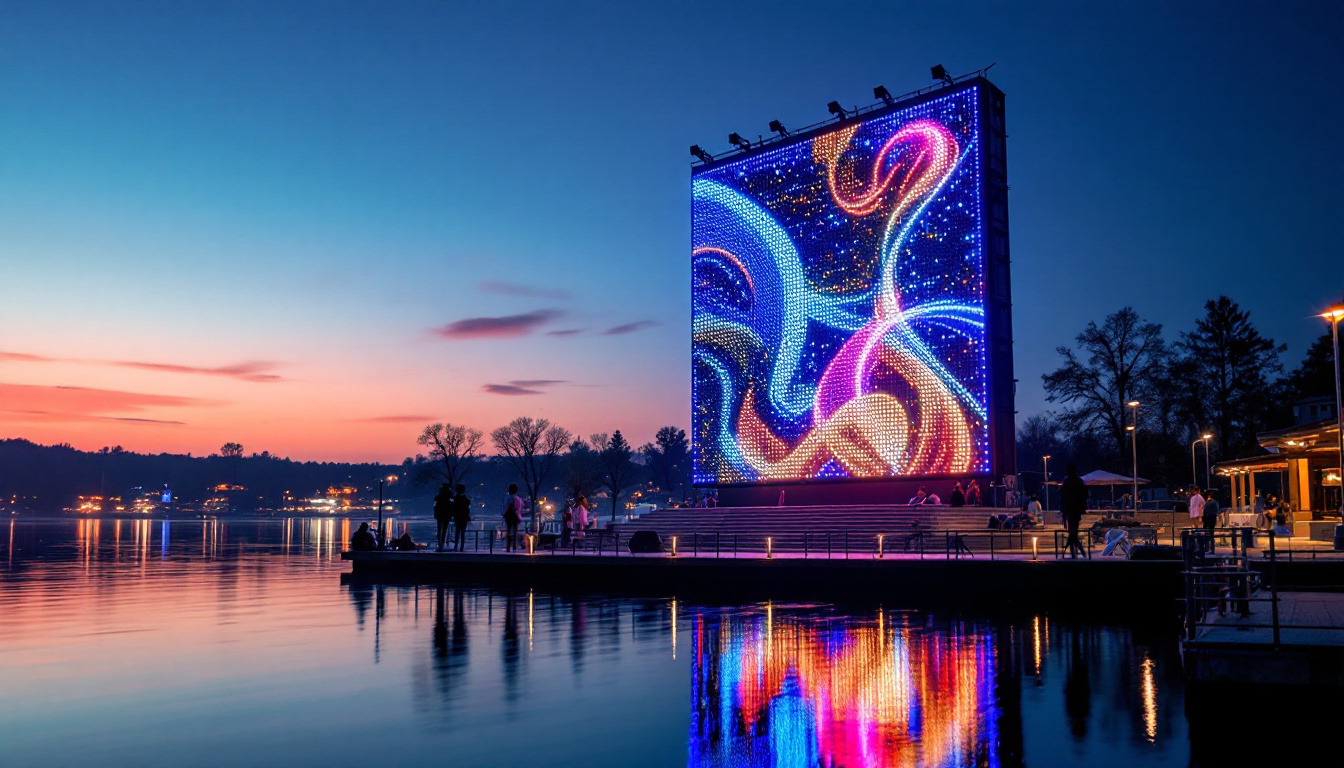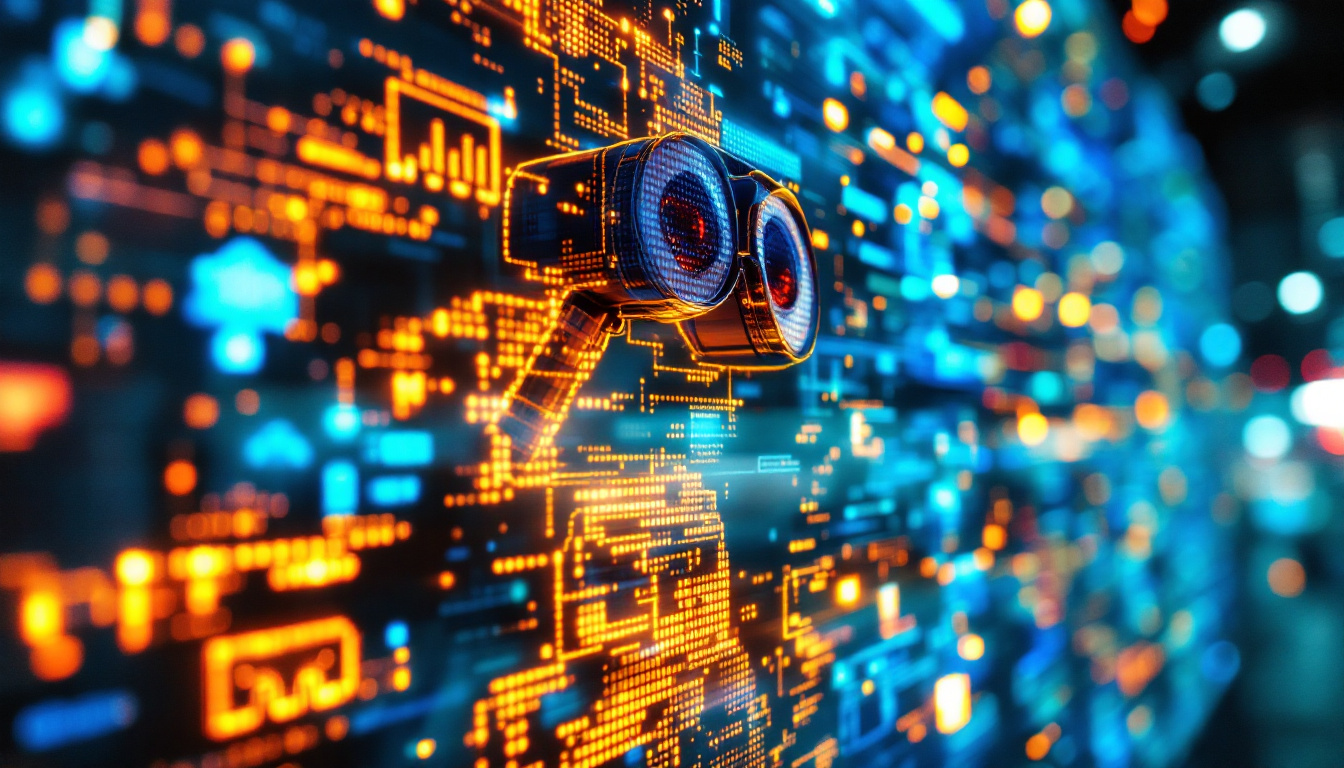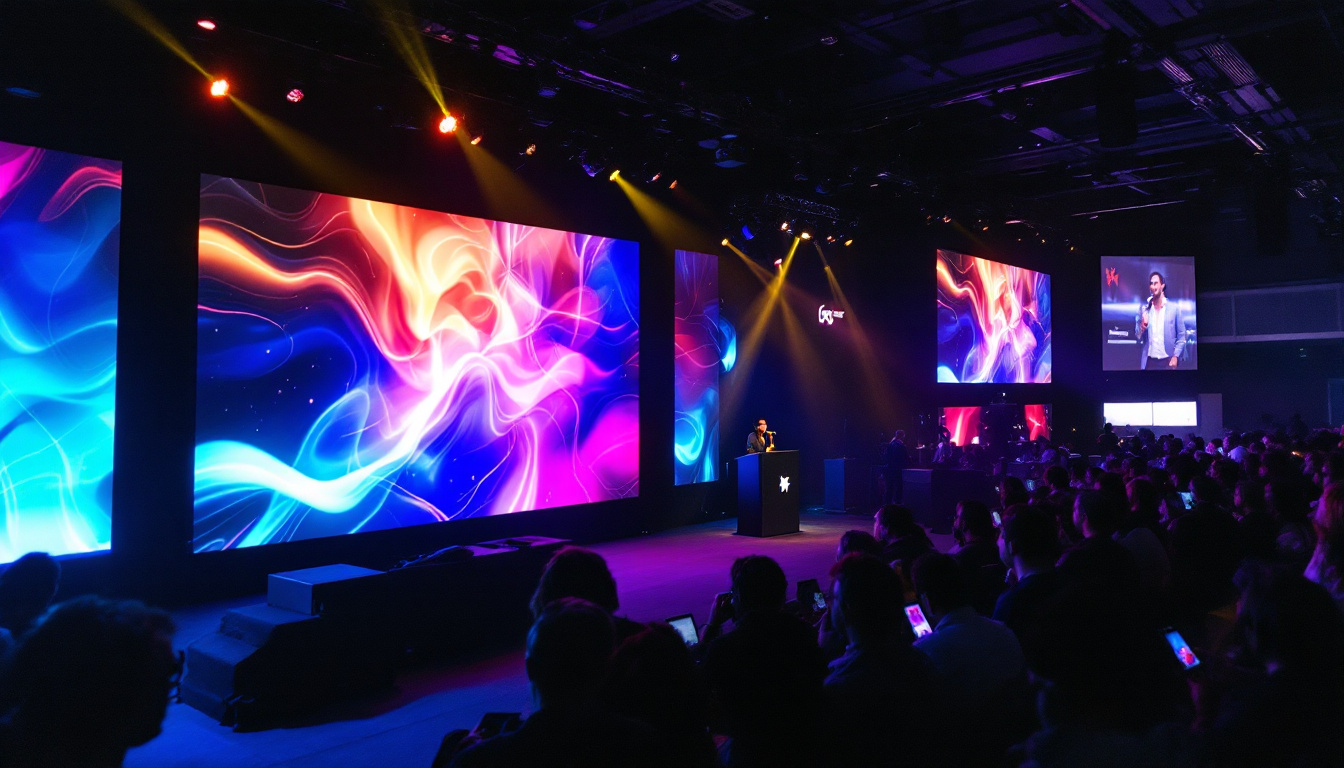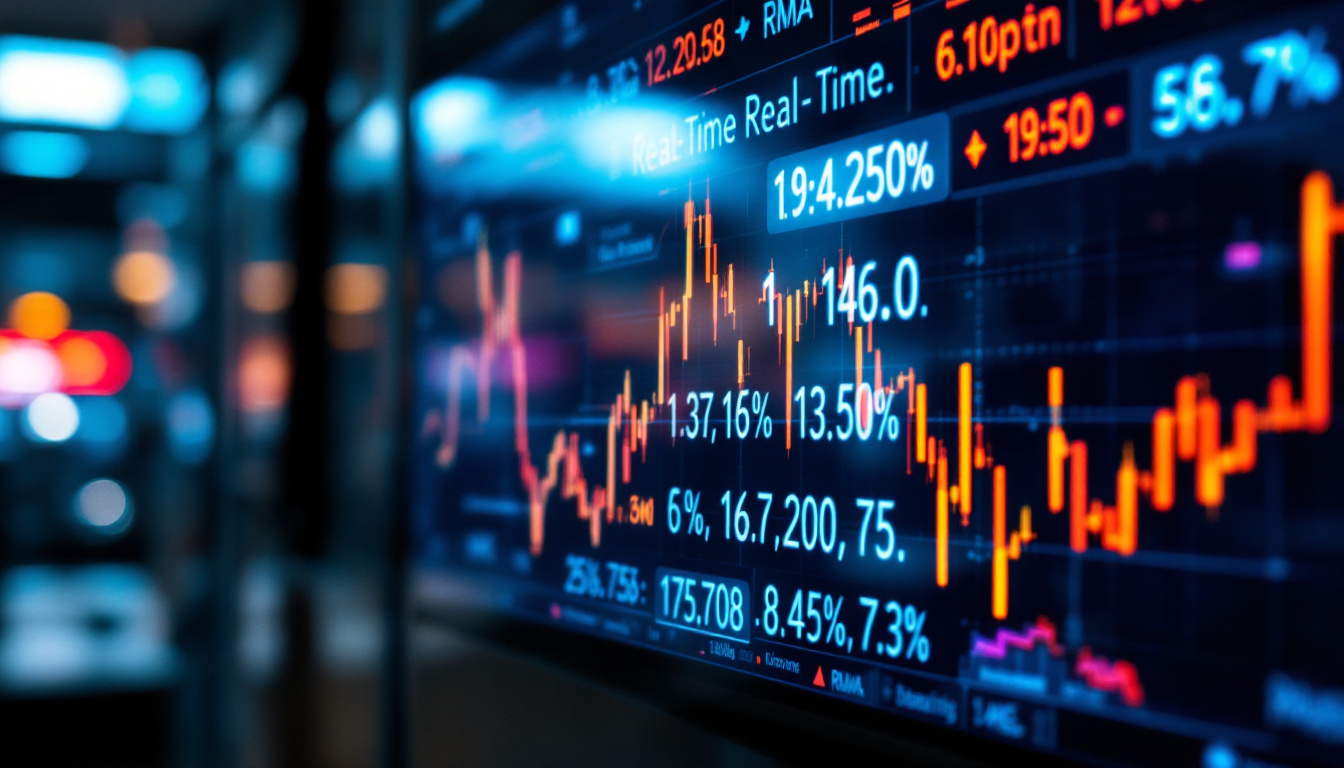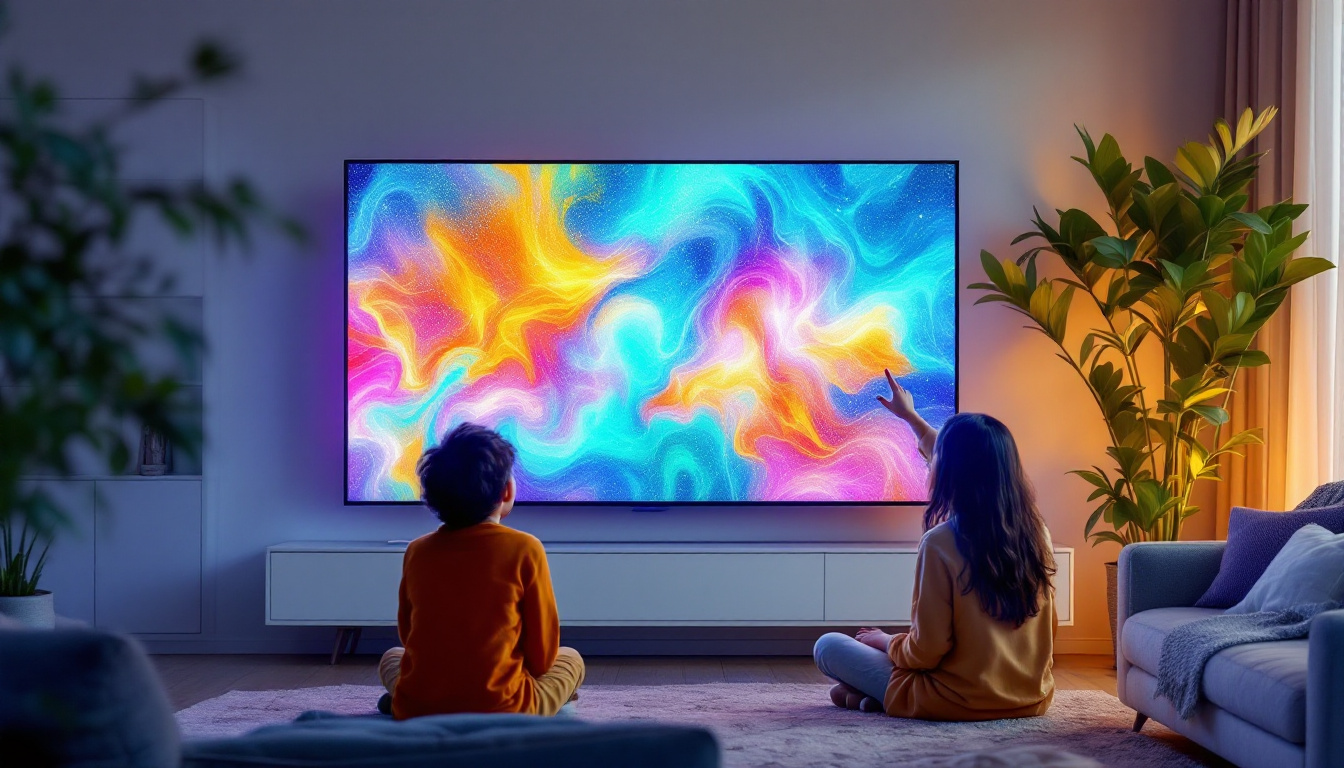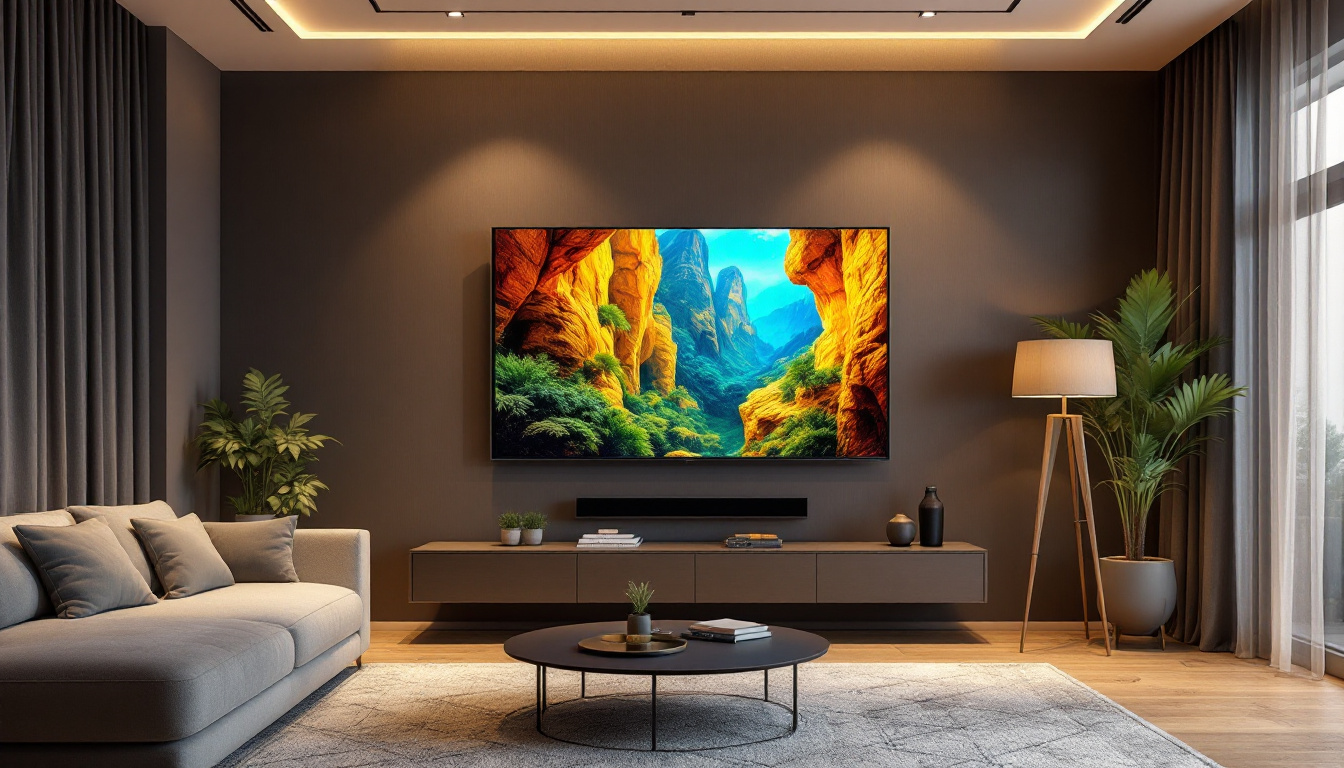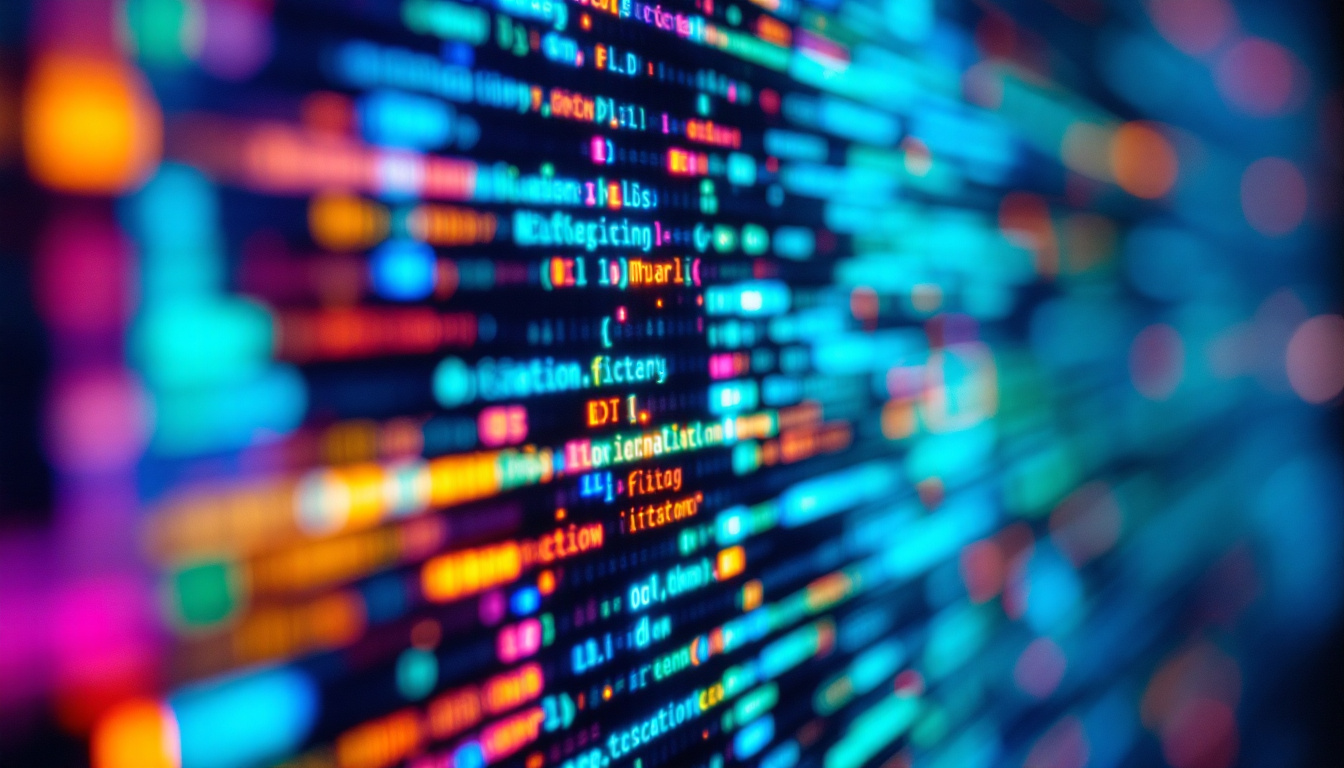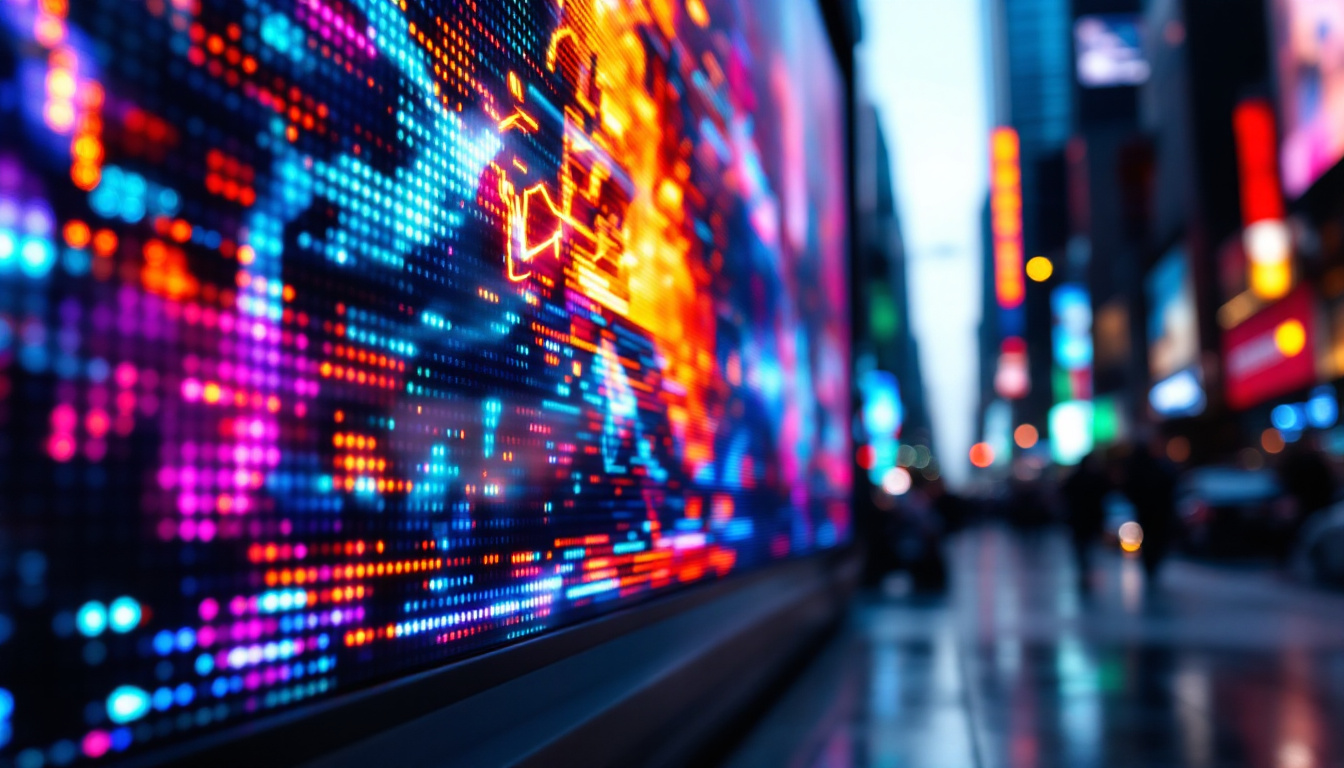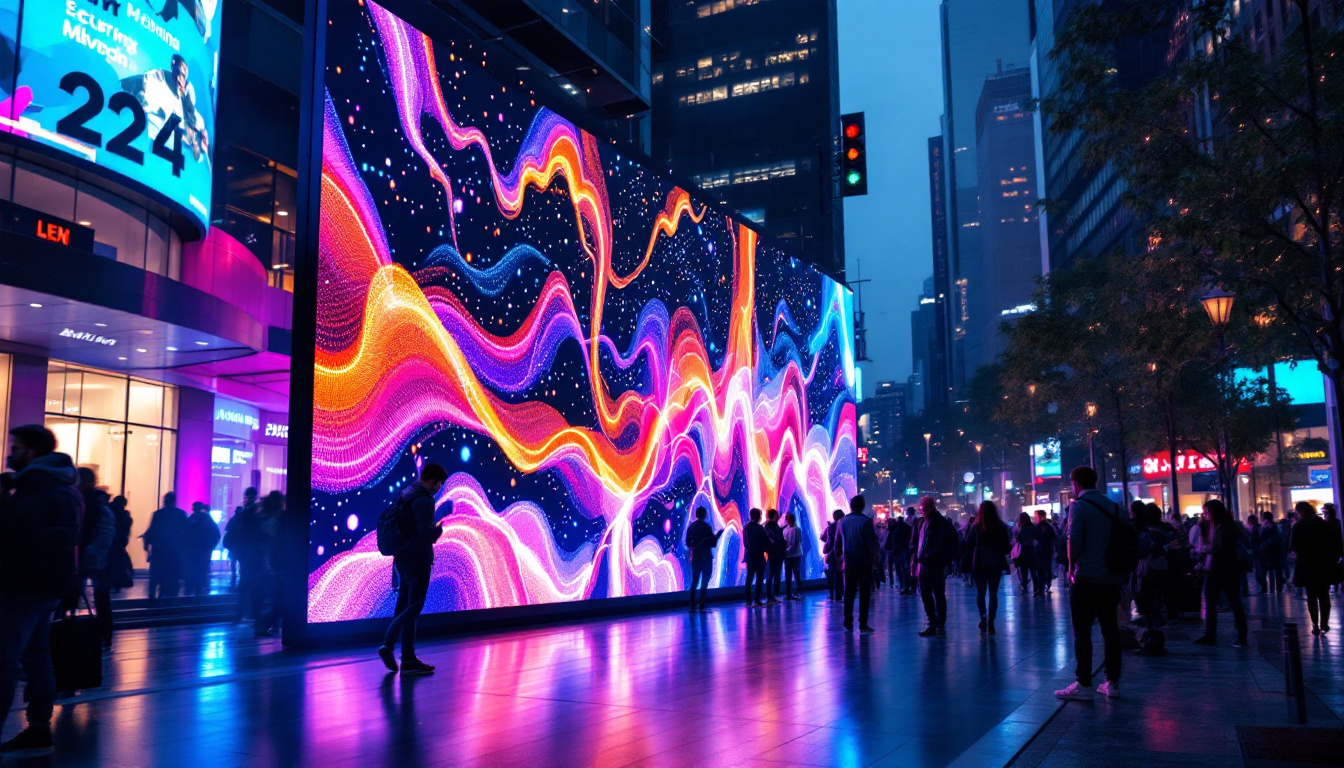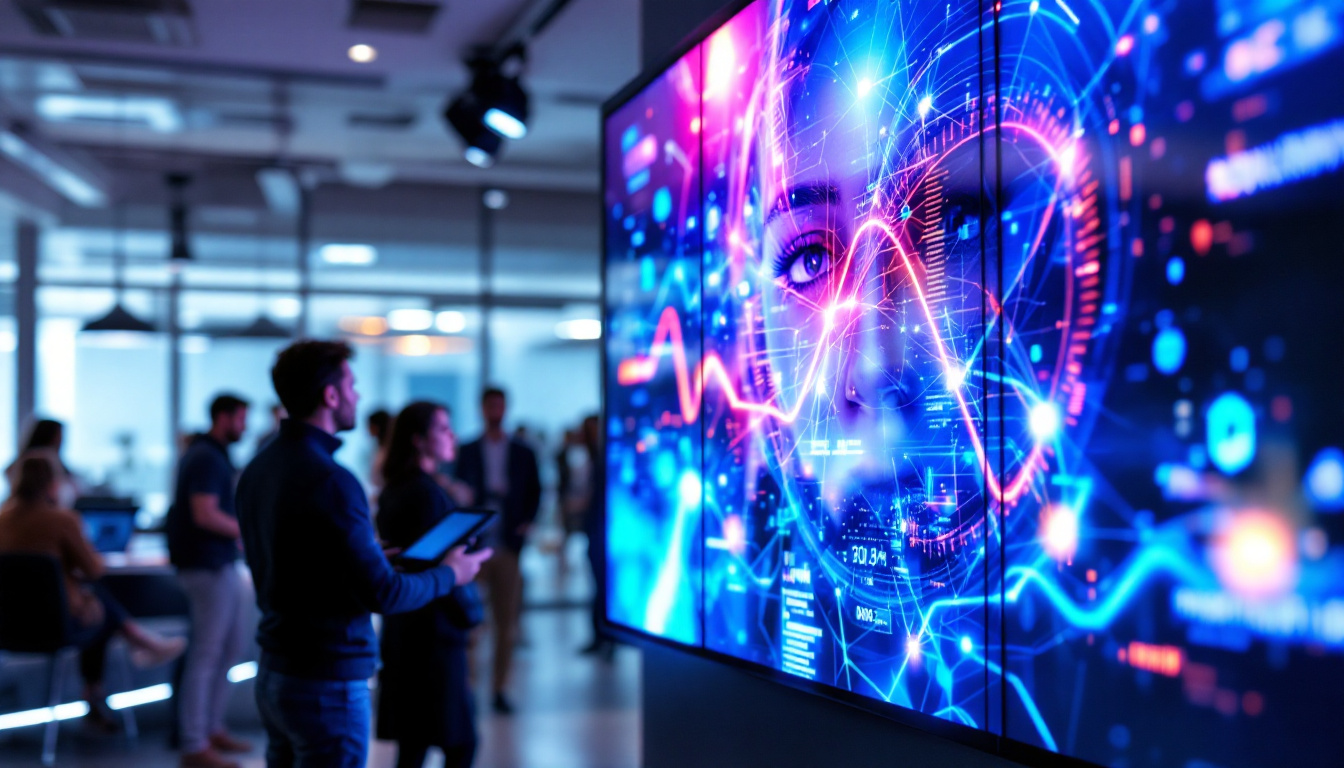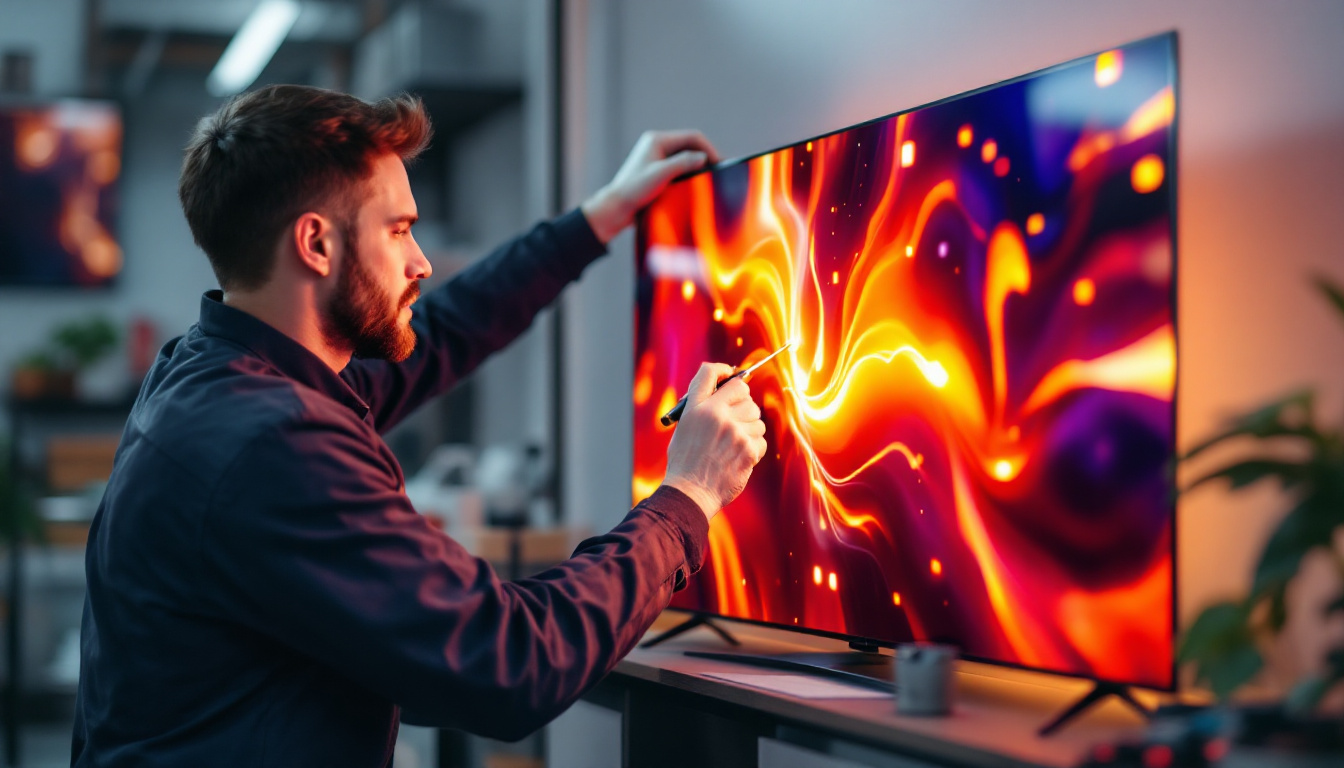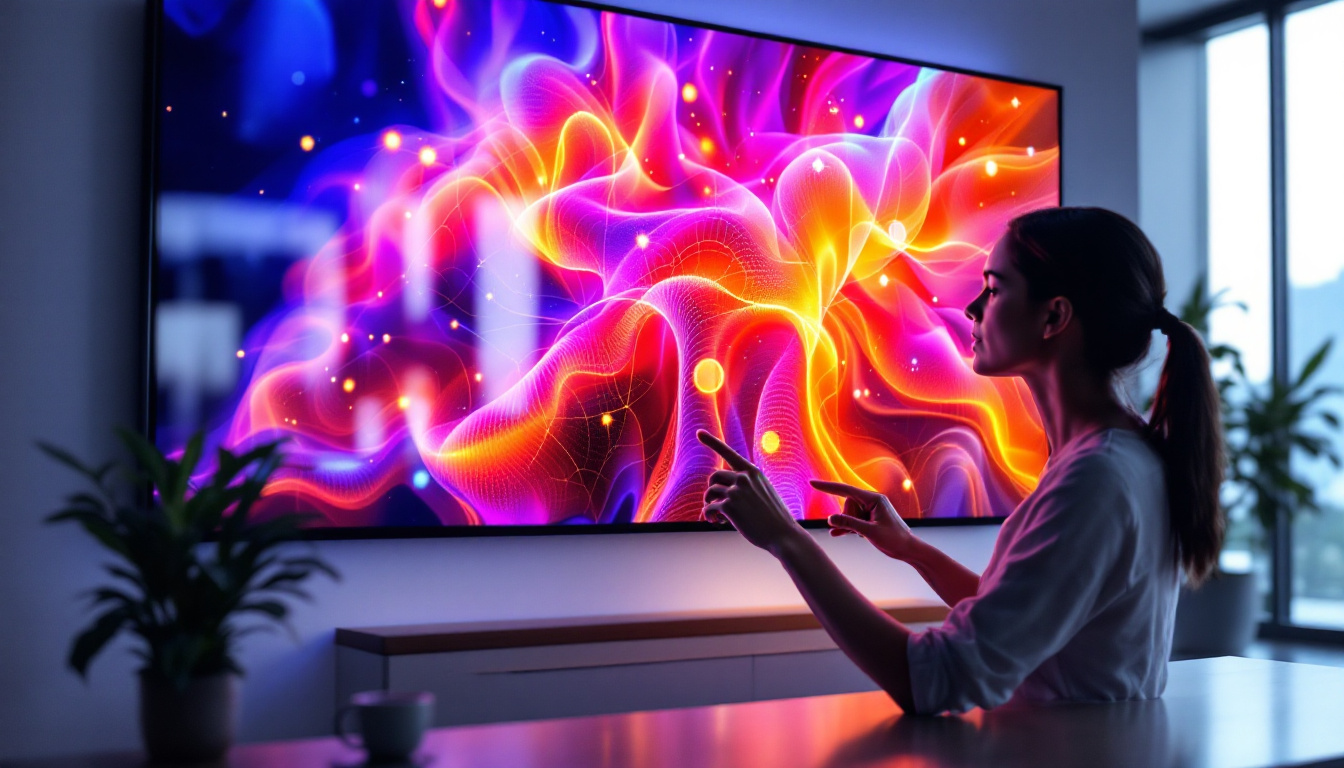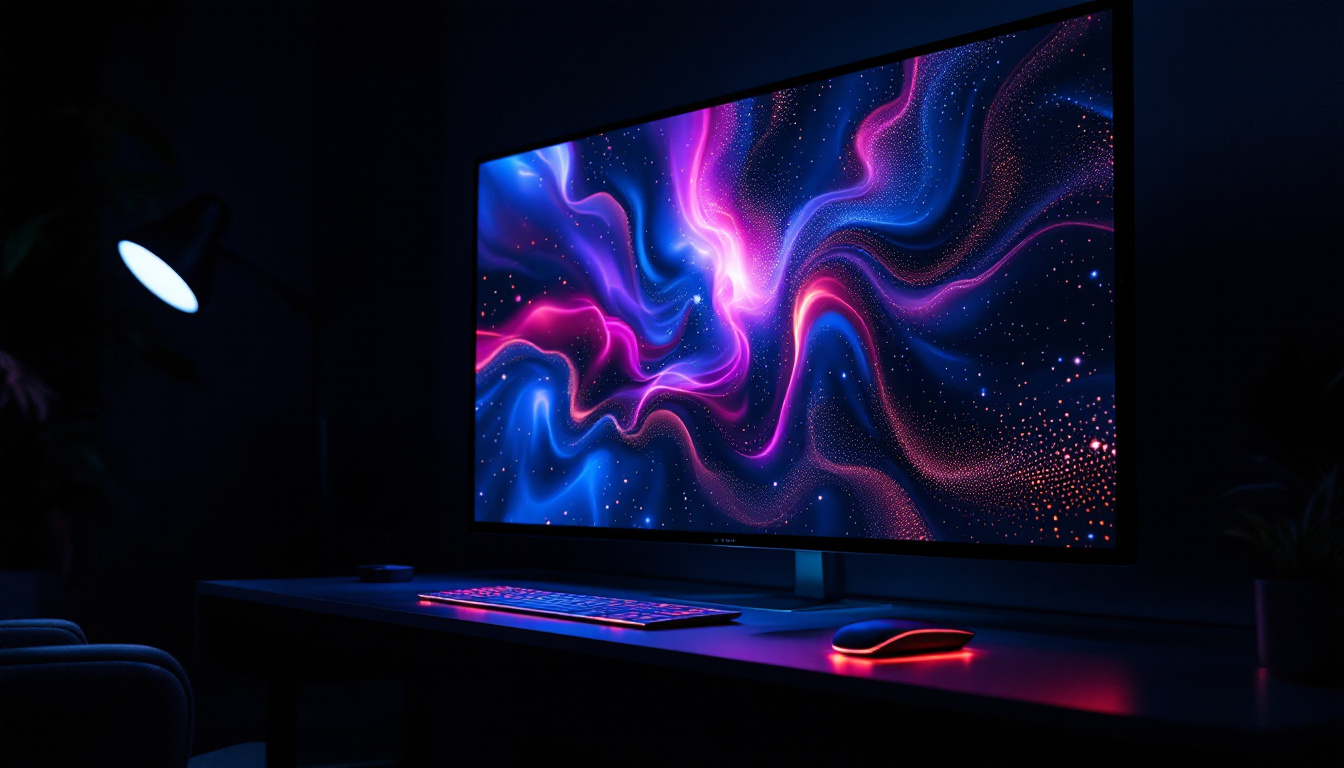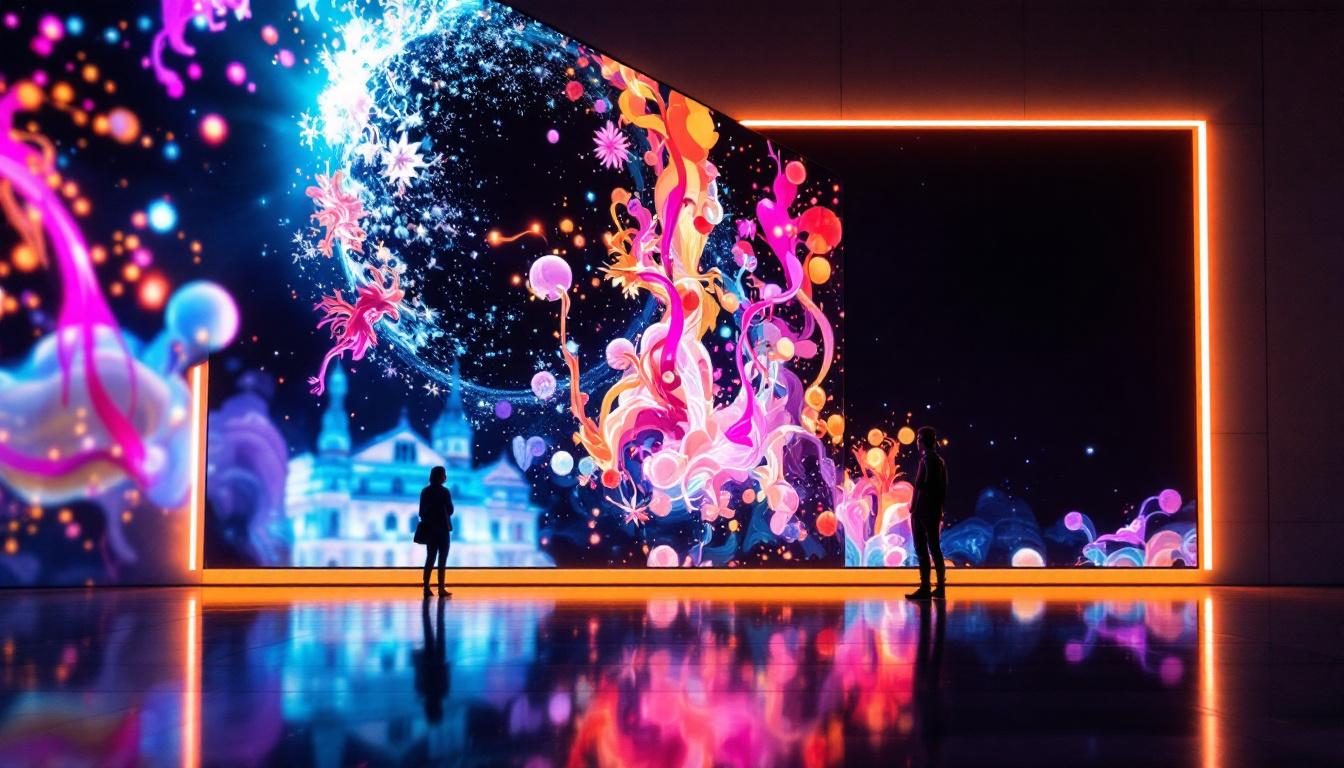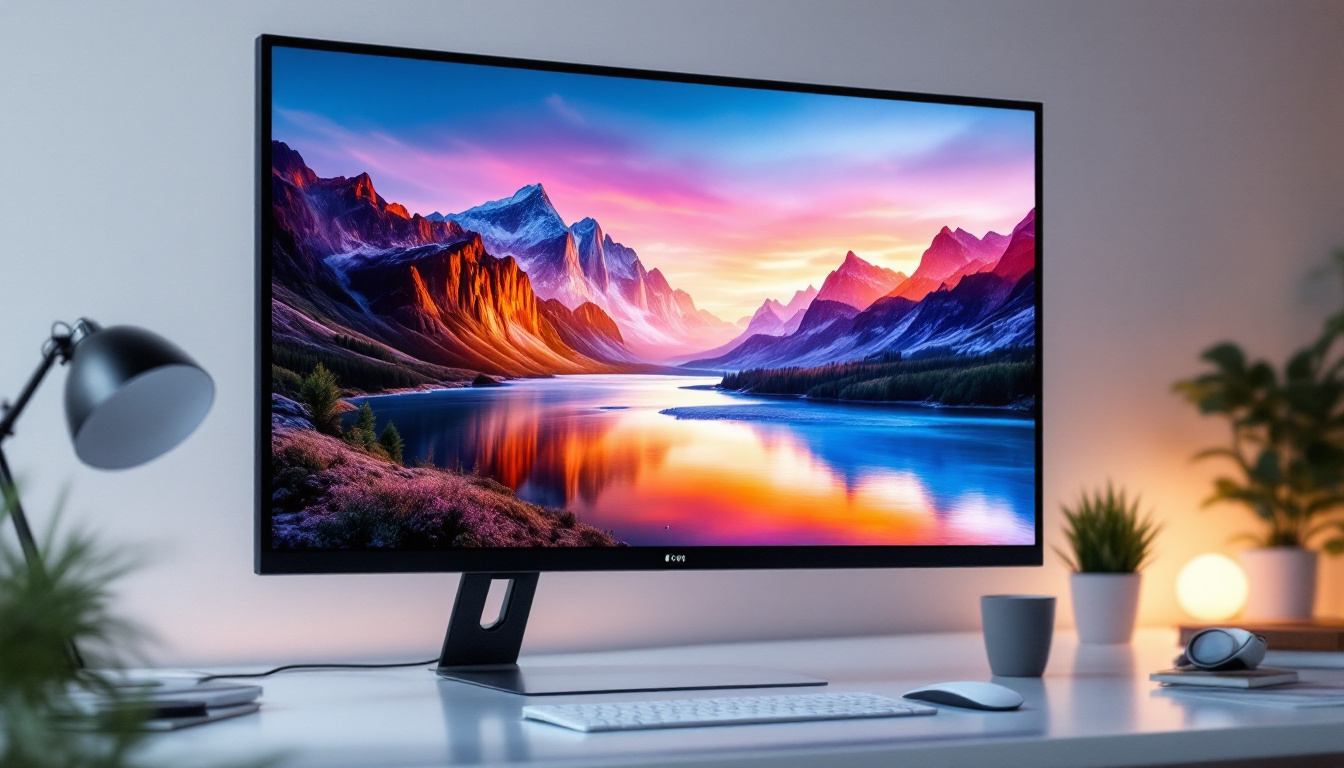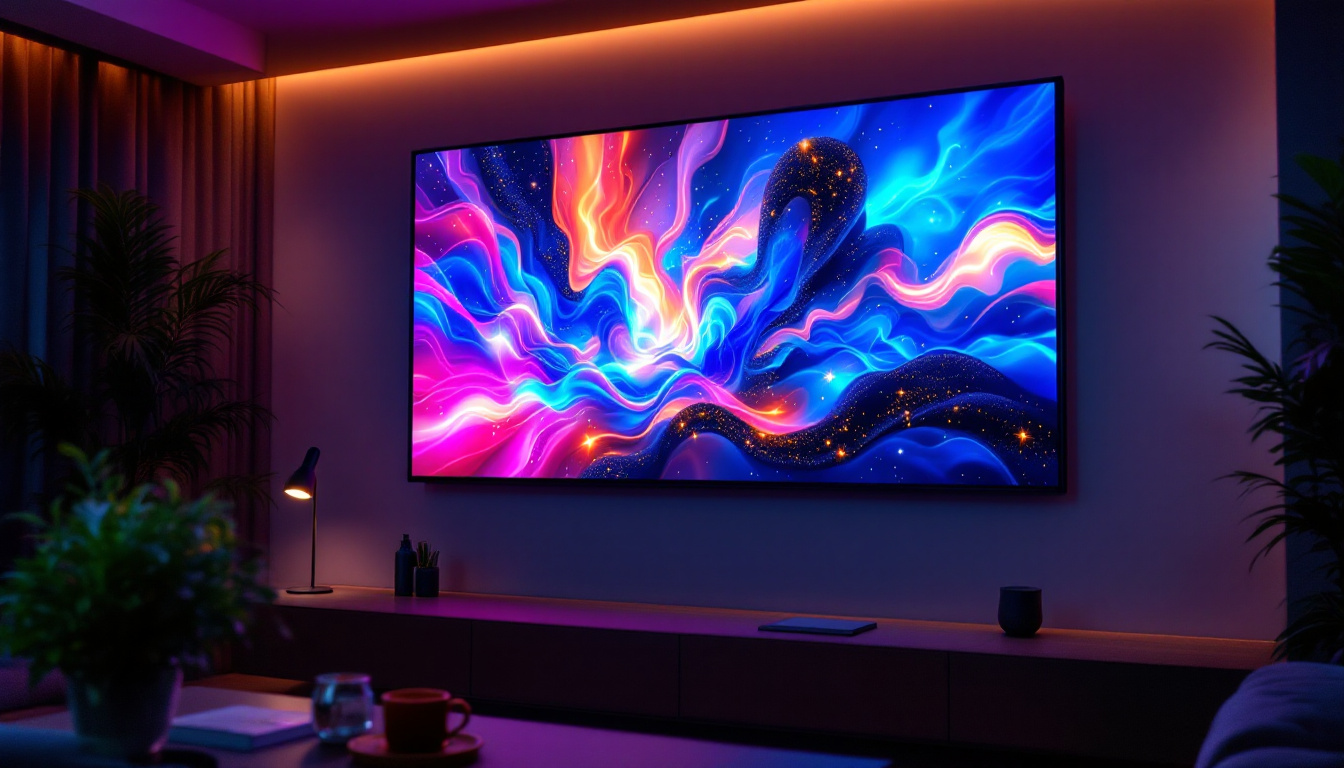In the rapidly evolving world of technology, LED displays have emerged as a cornerstone for visual communication. Their versatility and efficiency have made them a popular choice across various industries, from advertising to entertainment. This article delves into the intricacies of LED displays, exploring their functionality, applications, and the factors to consider when selecting the right vendor for your needs.
Understanding LED Display Technology
LED, or Light Emitting Diode, technology has transformed the way visual content is delivered. Unlike traditional display technologies, LED displays utilize a matrix of tiny light-emitting diodes to create images and videos. This section will explore the fundamental aspects of LED display technology, including how it works and its advantages over other display types.
How LED Displays Work
At the core of LED display technology is the concept of electroluminescence. When an electric current passes through a semiconductor material, it emits light. In an LED display, thousands of these diodes are arranged in a grid, where each diode corresponds to a pixel on the screen. The intensity and color of each pixel can be adjusted independently, allowing for vibrant images and videos.
LED displays can be categorized into two main types: direct view and backlit. Direct view LED displays are composed of individual LEDs that form the entire image, while backlit displays utilize LEDs to illuminate an LCD panel. The direct view type is often preferred for outdoor applications due to its higher brightness and better visibility in sunlight. Additionally, advancements in technology have led to the development of microLED displays, which use microscopic LEDs to create even more precise images with higher pixel densities, making them ideal for high-resolution applications like virtual reality and augmented reality.
Advantages of LED Displays
One of the primary advantages of LED displays is their energy efficiency. Compared to traditional display technologies, LED screens consume significantly less power, making them a more sustainable option. Additionally, LED displays have a longer lifespan, often lasting over 100,000 hours with minimal degradation in quality.
Furthermore, LED displays offer superior brightness and contrast ratios. This capability allows them to produce vivid colors and sharp images, even in challenging lighting conditions. Their flexibility in design also means they can be configured in various shapes and sizes, making them suitable for a wide range of applications. For instance, LED displays are increasingly being used in large-scale advertising, sports arenas, and concert venues, where their ability to display dynamic content in real-time can enhance the viewer experience. Moreover, the modular nature of LED technology allows for easy repairs and upgrades, ensuring that these displays can adapt to evolving technological standards and consumer preferences.
Another significant advantage of LED displays is their low maintenance requirements. Unlike traditional cathode ray tube (CRT) or even some LCD displays, LED screens are less prone to burn-in and image retention, which can be a concern in environments where static images are displayed for extended periods. This durability not only reduces the total cost of ownership but also ensures that businesses can maintain a professional appearance without frequent replacements or repairs. As a result, LED technology is becoming the go-to choice for businesses looking to invest in long-lasting, high-quality visual solutions.
Applications of LED Displays
The versatility of LED displays has led to their adoption across numerous sectors. From advertising billboards to sports arenas, the applications are virtually limitless. This section will explore some of the most common uses of LED display technology.
Advertising and Marketing
One of the most prominent applications of LED displays is in advertising. Digital billboards and signage have revolutionized the marketing landscape, allowing businesses to display dynamic content that can be updated in real-time. This capability not only enhances engagement but also enables targeted advertising based on time and audience demographics.
Moreover, LED displays can be strategically placed in high-traffic areas, maximizing visibility and reach. Their ability to showcase vibrant visuals makes them particularly effective in capturing the attention of potential customers, leading to increased brand awareness and sales. The integration of motion graphics and video content further amplifies their impact, making advertisements more memorable and persuasive. As a result, businesses are increasingly investing in LED technology to stay competitive in a fast-paced market.
Events and Entertainment
In the realm of entertainment, LED displays play a crucial role in enhancing the audience experience. Concerts, festivals, and sporting events often feature large LED screens that display live feeds, graphics, and advertisements. These displays create an immersive environment, allowing attendees to feel more connected to the event.
Additionally, LED technology is frequently used in stage productions and theatrical performances. The flexibility of LED panels allows for creative staging and lighting effects, transforming ordinary performances into extraordinary visual spectacles. For instance, LED backdrops can change scenes seamlessly, providing a dynamic canvas that complements the narrative. This adaptability not only captivates the audience but also allows directors and producers to push the boundaries of traditional storytelling, making each performance unique and engaging.
Corporate and Educational Use
LED displays are also making their mark in corporate and educational settings. In conference rooms, they are used for presentations and video conferencing, providing clear visuals that enhance communication. Educational institutions utilize LED displays for teaching purposes, displaying interactive content that engages students and facilitates learning.
Furthermore, digital signage in corporate environments can convey important information to employees and visitors. From wayfinding to announcements, LED displays serve as a versatile communication tool that can be easily updated as needed. In addition, they can be employed for training sessions, where real-time feedback and interactive elements can significantly improve retention and understanding. As technology advances, the integration of LED displays with augmented reality (AR) and virtual reality (VR) is anticipated to further revolutionize both corporate training and educational methodologies, creating even more engaging and effective learning experiences.
Choosing the Right LED Display Vendor
With the increasing demand for LED displays, numerous vendors have emerged in the market. Selecting the right vendor is crucial to ensure that the display meets specific needs and expectations. This section outlines key factors to consider when choosing an LED display vendor.
Quality of Products
When evaluating potential vendors, the quality of their products should be a top priority. High-quality LED displays are characterized by superior brightness, color accuracy, and durability. It is essential to research the vendor’s reputation and read customer reviews to gauge the reliability of their products.
Additionally, consider the vendor’s warranty and support services. A reputable vendor should offer a comprehensive warranty that covers potential defects and provide reliable customer support to address any issues that may arise post-purchase.
Customization Options
Every business has unique requirements, and the ability to customize LED displays can significantly enhance their effectiveness. When selecting a vendor, inquire about the customization options available. This includes the size, shape, resolution, and mounting solutions for the display.
Vendors that offer tailored solutions can help create a display that aligns with branding and messaging goals, ensuring that the final product resonates with the target audience.
Cost and Value
While cost is an important consideration, it should not be the sole determining factor. It is essential to evaluate the overall value offered by the vendor. This includes the quality of the display, warranty, customer support, and any additional features that may enhance the product’s functionality.
Requesting quotes from multiple vendors can help compare prices and identify the best option that fits within budget constraints while still meeting quality standards.
Future Trends in LED Display Technology
As technology continues to advance, LED displays are expected to evolve significantly. This section will explore some of the emerging trends that are shaping the future of LED display technology.
Integration with Smart Technology
The integration of LED displays with smart technology is one of the most exciting trends on the horizon. Smart LED displays can connect to the internet, allowing for real-time content updates and remote management. This capability enhances flexibility and responsiveness, making it easier for businesses to adapt to changing needs.
Moreover, smart LED displays can utilize data analytics to optimize content delivery based on audience behavior and preferences. This level of personalization can lead to more effective marketing strategies and improved customer engagement.
Advancements in Resolution and Pixel Density
As consumer demand for high-quality visuals grows, advancements in resolution and pixel density are becoming increasingly important. Manufacturers are developing LED displays with higher pixel counts, resulting in sharper images and more detailed content.
Ultra-high-definition (UHD) and 8K LED displays are already making waves in the market, providing stunning visuals that enhance the viewing experience. This trend is likely to continue, with manufacturers pushing the boundaries of display technology to meet consumer expectations.
Eco-Friendly Innovations
With a growing emphasis on sustainability, the LED display industry is also focusing on eco-friendly innovations. Manufacturers are exploring ways to reduce energy consumption and utilize recyclable materials in their products. This shift not only benefits the environment but also aligns with the values of consumers who prioritize sustainability.
Additionally, advancements in energy-efficient technologies, such as organic LEDs (OLEDs), are gaining traction. These displays offer improved energy efficiency and can be produced with less environmental impact, paving the way for a greener future in display technology.
Conclusion
LED displays have revolutionized the way visual content is presented across various industries. Their unique technology, versatility, and energy efficiency make them an ideal choice for advertising, entertainment, corporate, and educational applications. As the market continues to grow, selecting the right vendor is crucial to ensure the display meets specific needs and expectations.
Looking ahead, the future of LED display technology is promising, with advancements in smart integration, resolution, and sustainability on the horizon. By staying informed about these trends, businesses can leverage LED displays to enhance their communication strategies and engage their audiences effectively.
In a world where visual communication is paramount, understanding LED displays and their potential can empower organizations to make informed decisions that drive success.
Discover LumenMatrix LED Display Solutions
Ready to elevate your visual communication with cutting-edge LED technology? Look no further than LumenMatrix, a leader in innovative LED display solutions. From dynamic indoor and outdoor displays to specialized options like vehicle, sports, and transparent LED displays, LumenMatrix offers a diverse range of products designed to captivate your audience and amplify your message. Embrace the future of digital signage with LumenMatrix and create unforgettable visual experiences. Check out LumenMatrix LED Display Solutions today and see the difference for yourself.

